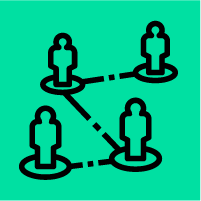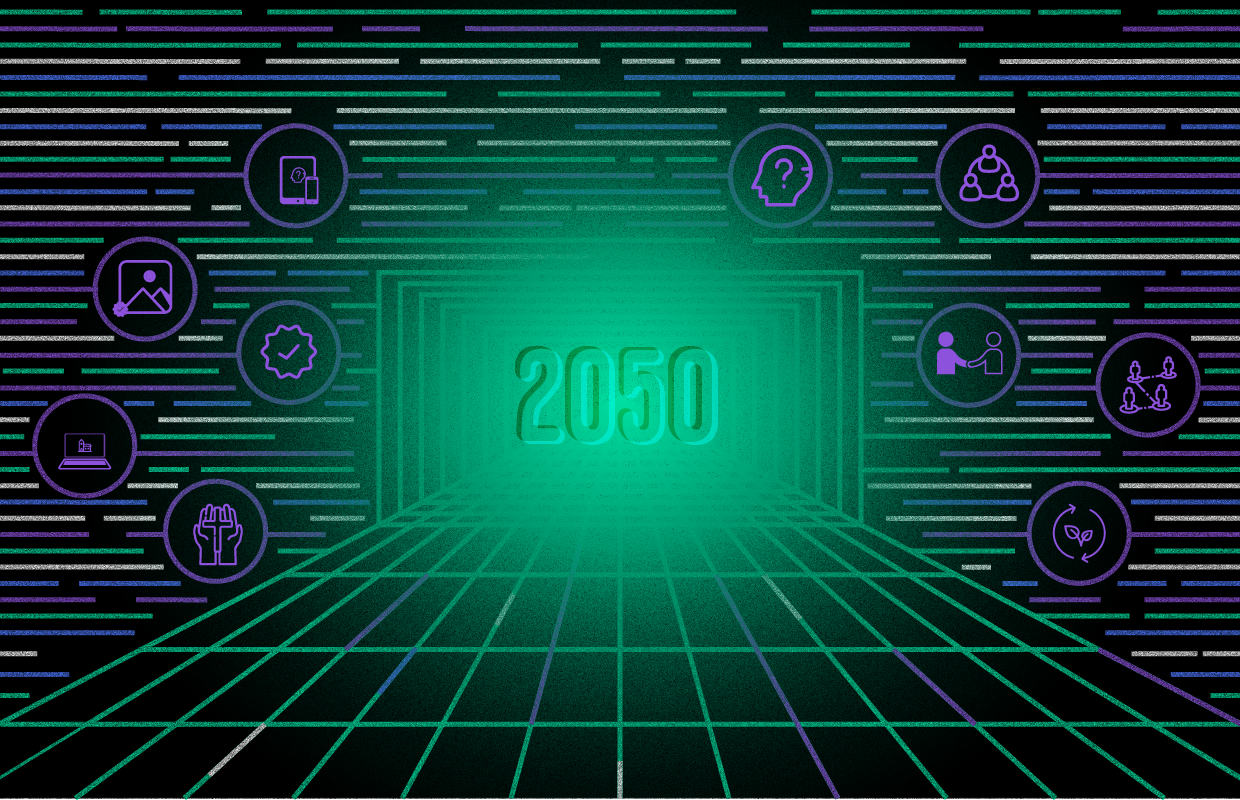As part of the Lausanne 4 process, we cast our eyes to the horizon and ask how we can steward the Great Commission in the decades ahead, between now and 2050. Yet in doing so, we must humbly recognize that we live in a dichotomy between the certainty and the uncertainty of the future.
I am certain that the ideas that will shape 2050 are being formed today in universities, publishing houses, and boardrooms, and on the desktops and in the minds of influencers.
However, I am uncertain what specific advances or events in our world will be the catalytic shapers of our future. Wild futuristic predictions abound, boldly predicting everything from technological advancements to rumors of future wars, from social developments to the rise and fall of church forms. All specific predictions of cause and effect are uncertain, and it is unwise to dedicate our efforts to refining ideas about the uncertain.
Instead, we should advocate for a careful study of culture, contextualized action, and loosely made plans to allow for the movement of the Spirit. Suppose we keep our ears open to conversational questions around the world as we keep our ears open to the leading of the Lord. In that case, we stand prepared to contextually share the good news of the gospel in a dynamically shifting world.
The following 10 questions, in no particular order, are key questions, I suggest, that the world is asking today and will continue to ask over the next thirty years. The resulting answers will shape not only the world in 2050 but also our Great Commission efforts.
Ten Questions that will Shape the Context of the Great Commission

What does it mean to be human?
Observable trends we see in the world today include advances in artificial intelligence, biomedical engineering, gene editing, nanotechnology, robotics, abortion legislation, and gender, sexual, and racial identity. These key emerging trends reveal the underlying question the world is asking from multiple angles: ‘What does it mean to be human?’
Each of the trends above holds the potential to question the meaning of humanity actively. But combined, the question of, ‘What does it mean to be human?’ is a fundamental question of our era; a question that will change the context of the gospel message.
As we redefine humanity, many secondary questions for the Great Commission emerge:
- How do we share the need for God’s sovereignty and salvation when anyone can simply ‘edit’ out perceived defects in ourselves and our surroundings?
- What does it mean to have an identity in Christ when we can create our own sociological and biological identity?
- How do we communicate the uniqueness of the Christian God amidst the rise of new pseudo-technological gods made in our own image?
- And ultimately, what is the relationship between man and God, creature and Creator?
This question about who and what we are will be at the core of contextual gospel proclamation and discipleship in the coming decades.

What is community?
A great dislocation has been happening in the past decades, and will continue in the decades to follow. The question of ‘What is community?’ is a life-shaping question for many today, from the multitudes forced from their homes and relocated to another land, to vast swaths of the global population voluntarily relocating their core community from physical neighbors to digital communities. As we think about missional efforts in the coming decades, this question is actively redefining the ‘go’ in ‘go make disciples of all nations’.
What does it mean to reach all nations when the nations are scattered across the world, as migration, immigration, and diaspora are seen in unprecedented numbers?
Communities today are often tied together ideologically and digitally without ever having met personally. How does the church respond when community is no longer based on geography? Conversely, how does that affect communities rooted in the same geographic location?
Christian community and outreach are happening in a world where ‘community’ is increasingly culturally dislocated, unrestricted by geography, and aided by technology, creating a new context for the Great Commission.

What is fair and equitable distribution?
There is an increasing gap between the equitable distribution of goods and influence between world regions and within countries. While disproportionate access to resources and systems is not historically a new phenomenon, this unequal distribution of wealth and influence places heightened tension on our world. History tells us that systemic imbalance admits increased aggravation between groups and has a limited timespan.
The world will increasingly ask, ‘What is fair and equitable distribution?’ As an advocate for ‘the least of these’, the church will be central to the discussions in coming decades, asking:
- How is the gospel message accessible for those who ‘have’ and those who ‘have not’? Do we have active outreach strategies for both groups?
- How can the church stand for ‘the least of these’ in a way that does not generate animosity with the culture / cultural influencers?
- When equity-driven rifts occur either at the local or global scale, how will the church shine the light of Christ?

How will demographic shifts drive change?
Nations and regions may not look the same in 2050. Countries like Japan are predicted to shrink in population, while countries like India are predicted to experience incredible population growth.
Even within countries, there will be shifts in age distributions swaying to either a higher percentage of youth or older adults. How does this put pressure on social dynamics and hierarchy within particular civilizations?
Overall, the world’s population will continue to grow, causing a domino effect on much of the existing infrastructure and leading to the growth of cities and religious populations. This question of ‘How will demographic shifts drive change?’ is a key question for Great Commission efforts.
We know demographic shifts will drive change, but how will the church seize the gaps and opportunities that come with those changes?
Are Great-Commission-oriented organizations positioned to pivot with these changes? Are organizations ready to bring the gospel to an increasing youth, elderly, or middle-class population (depending on the region)? Are gospel and discipleship efforts ready to rebalance efforts to more urban or dense populations?
Ultimately, the church must be aware of the changes occurring outside its walls so it can effectively be a witness amongst change.

How do we reach sustainability?
The urgent question of ‘How do we reach sustainability?’ is exploring how to live on a balanced path across many sectors.
Culture care advocates are calling the church and society to a tempered existence so that humanity does not exploit God’s creation to unknown ends.
Moderate economists are raising the alarm about increasing debt ratios for families and nations, calling for a more sustainable path.
Even the church, in many regions, is rethinking its operations to seek a more sustainable path financially and programmatically.
With such urgent questions of sustainability at the fore, the church will need to ask how its presentation of the gospel message attends to this pressing question. Does the gospel message only speak to individualized escapism to a heavenly realm, or does it speak to the redemption of all creation toward shalom?

What is a digital life?
For much of the world, digital and technological advancements have altered nearly every part of life. From social relationships to economic trade, virtual work to accessing information, we live vastly different lives from even one generation ago. Increasingly we are becoming more reflective on these changes and are now asking, ‘What is a digital life?’
Just as we are now asking ‘What is a digital life?’ we must also ask, ‘What do Great Commission efforts look like in a digital life?’
As we explore this question, further questions arise:
- How do we reach digital communities with the gospel?
- How do social media echo chambers, created from algorithmic tunnels, hinder the gospel message? And how do we cross tunnel borders to spread the gospel?
- How does remote virtual work change the idea of vocation and workplace ministry?
- What does church planting look like in a digital age?
- What is Scripture engagement and discipleship in a digital age?
- Does the church, and in what way, call people back to an embodied existence?
As the world redefines the nature of life, Great Commission efforts must balance contextualization for digital life with the core principles of a non-digital existence.

Will visual affect remain the validator of truth?
For much of the world, visual image trumps words, and production quality speaks louder than truthfulness. This visual culture has radically shifted, or at least augmented, philosophical transitions. Truth used to be known and rooted in objective principles. Today, truth is primarily validated by the level of emotional response that is either generated or discouraged by the quality of graphics, images, and video production.
The shift to visual culture has caused much change, but the question is, will this continue? Or will there be a tipping point where this trend shifts? A key question for the following decades is, ‘Will visual affect remain the validator of truth?’
The shift to a visual culture has influenced Great Commission and gospel witness efforts. But the question remains: has the church fully understood the importance of visual culture?
Furthermore, in forthcoming decades, Great Commission efforts will need to discern to what extent it embraces visual culture as a critical contextualization initiative vs. how much it advocates for objective truth.
How much are Evangelicalism and Protestantism willing to trust its artists and designers to lead Great Commission efforts beyond mere underfunded side projects or organizational communication needs?
Will the church again lead in the curation of culture via its dedication to visual culture, as it has historically done?
These questions are critical to the perceived truthfulness of the gospel message.

What is the foundation of trust?
In an increasingly pluralized world, people have many explanatory ideologies to place their trust in. As these ideologies grow in adherence and number, the question ‘What is the foundation of trust?’ will increasingly shape our world.
Will science and positivism remain a trustworthy source of knowledge? Or will an ethic of authenticity and emotivism be the standard of self-truth? How do competing religious ideologies shape nations and regions? What role will media and propaganda play in formulating or degrading trust? Can people trust their leaders to be ethical and not corrupt?
Although these questions are being asked of general culture, they are also being asked of the church.
Is Christianity a trustworthy source of knowledge, distinct from other competing explanatory ideologies? Is the gospel message trustworthy or just propaganda? Can people trust church leaders to be ethical and not corrupt?
The answers to these questions will significantly undercut or demonstrate the viability of the gospel message.

Where does hope lie?
Hope is a central need for all humanity. However, between now and 2050, the array of options for placing one’s hope will expand in dynamic ways.
Contenders for the foundation of hope beyond religion are radical political leaders, self-actualization, empowerment of the masses, critical theory, and more. However, distinct to our age, options for hope do not just include utilitarian hope from worldly ideas, but will increasingly include hope in technological advancement as a pseudo-transcendental means for healing and eternal life. ‘Where does hope lie?’ is a critical question for the world and the plausibility of the gospel message.
Is the church ready to communicate the hope of the gospel as a persuasive option beyond other traditional avenues of hope?
And perhaps most pertinently, is the church prepared to speak to the uniqueness of gospel hope when technological advancements seem to offer a competing eternal life? Will the church be prepared to speak to the fullness of a life in Christ when the Fourth Industrial Revolution allows for a seemingly fully customizable life at every turn?
Where the world places its trust, and how it treats oppositional ideologies, is a central question in the coming decades that will shape the Great Commission.

What is the form of church?
In light of the questions above, the question that follows is ‘What is the form of church?‘
While the Lausanne Movement is primarily about addressing matters related to the Great Commission, we should carefully consider this question addressing the church’s broader forms.
Undoubtedly the purpose of the church remains the same as the world changes around it. However, we must ask questions concerning the form of the church and what it may look like over the next thirty years. The Covid-19 pandemic raised many questions about the form of the church—questions that will continue over the coming decades.
How Will the Church Shape the World of 2050?
The future is fundamentally uncertain, but if we wait for it to develop, we limit ourselves to mere reaction. My intention is to spark the conversation that can move the global church from a posture of reactive response to one that proactively shapes the world of 2050. Let’s start talking.



